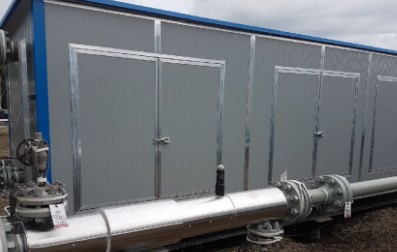In the realm of oil and gas operations, efficiency is paramount. Every aspect of the process, from extraction to distribution, must be optimized to ensure maximum productivity and profitability. One often overlooked aspect of oilfield efficiency is infrastructure, particularly the role of utilidors. These underground utility corridors are crucial in streamlining operations, enhancing safety, and reducing costs. In this blog post, we’ll explore how utilidors enhance oilfield efficiency and why they are indispensable in today’s energy landscape.
Streamlining Utility Distribution
One of the primary functions of utilidor is to streamline the distribution of utilities within oilfield facilities. By consolidating electrical, water, and telecommunications infrastructure into underground corridors, utilidors eliminate the need for above-ground installations, reducing clutter and minimizing the risk of damage from external factors such as harsh weather or accidental impacts.
Enhancing Safety Measures
Utilidors play a crucial role in enhancing safety measures within oilfield environments. By housing utilities underground, they mitigate the risk of electrical hazards, water leaks, and other potential dangers associated with above-ground installations. Additionally, utilidors are often equipped with advanced monitoring and surveillance systems to detect any abnormalities or security breaches, further enhancing safety protocols.
Minimizing Environmental Impact
The use of utilidors can help minimize the environmental impact of oilfield operations. By reducing the need for above-ground infrastructure, utilidors preserve natural habitats and minimize disturbance to local ecosystems. Additionally, underground utility corridors help protect against oil spills and other environmental hazards, safeguarding surrounding land and water resources.
Optimizing Space Utilization
Utilidors are designed to optimize space utilization within oilfield facilities. By consolidating utilities underground, they free up valuable surface area that can be utilized for other purposes such as equipment storage, vehicle access, or recreational facilities. This efficient use of space helps maximize the overall productivity and functionality of the oilfield site.
Facilitating Maintenance and Repairs
Maintaining and repairing above-ground utility infrastructure can be challenging and time-consuming, especially in remote or harsh environments. Utilidors simplify this process by providing easy access to underground utilities, allowing maintenance personnel to quickly identify and address issues without disrupting ongoing operations. This proactive approach to maintenance helps minimize downtime and ensures uninterrupted productivity.
Supporting Remote Operations
Many oilfield operations are located in remote or isolated areas with limited access to infrastructure and resources. Utilidors help support these remote operations by providing a reliable and efficient means of utility distribution. Whether it’s supplying power to drilling rigs, transmitting data from monitoring equipment, or delivering water for onsite use, utilidors play a critical role in keeping operations running smoothly in even the most challenging environments.
Improving Reliability and Resilience
The underground nature of utilidors makes them inherently more resilient to external threats such as extreme weather, vandalism, or industrial accidents. Unlike above-ground infrastructure, which is susceptible to damage and disruption, utilidors provide a secure and reliable means of utility distribution, ensuring continuous operation even in adverse conditions. This improved reliability translates to greater overall efficiency and productivity in oilfield operations.
Cost-Effectiveness of Utilidors
While the initial cost of installing utilities may be higher than traditional above-ground infrastructure, the long-term cost-effectiveness cannot be overstated. Utilidors require less maintenance and repair over time, resulting in lower operational costs and reduced downtime. Additionally, the enhanced safety and reliability offered by utilidors help mitigate the risk of costly accidents or environmental incidents, further contributing to their overall cost-effectiveness.
Future Prospects and Innovations in Utilidor Technology
As technology continues to evolve, so too do utilidors. Innovations such as smart sensors, predictive maintenance algorithms, and modular construction techniques are revolutionizing the way utilidors are designed, built, and maintained. These advancements promise to further enhance the efficiency, reliability, and sustainability of utilidor infrastructure, ensuring that they remain a cornerstone of oilfield operations for years to come.
Frequently Asked Questions
Q: What exactly are utilidors?
A: Utilidors are underground utility corridors designed to house and protect essential infrastructure such as electrical cables, water pipes, and telecommunication lines. They provide a dedicated space for utilities, keeping them out of sight and protected from external elements.
Q: How do utilidors enhance oilfield efficiency?
A: Utilidors streamline utility distribution, enhance safety measures, minimize environmental impact, optimize space utilization, facilitate maintenance and repairs, support remote operations, improve reliability and resilience, and offer cost-effective solutions, all of which contribute to overall oilfield efficiency.
Q: What materials are utilidors typically made of?
A: Utilidors are typically constructed from durable materials such as concrete or fiberglass. These materials provide strength and protection against external factors, ensuring the longevity and reliability of the underground utility corridors.
Q: What are some of the safety features incorporated into utilidors?
A: Utilidors often come equipped with advanced monitoring and surveillance systems to detect abnormalities or security breaches. Additionally, their underground nature helps mitigate the risk of electrical hazards, water leaks, and other potential dangers associated with above-ground installations.
Conclusion
Utilidors are more than just utility enclosures; they are a cornerstone of efficient and sustainable oilfield operations. By streamlining utility distribution, enhancing safety measures, and supporting future expansion, utilidors play a crucial role in maximizing productivity and minimizing costs for oil and gas companies. As the industry continues to evolve, utilidors will remain a vital component of infrastructure that enables companies like G & R Insulating to thrive in a competitive landscape while upholding their commitment to excellence, safety, and efficiency.




